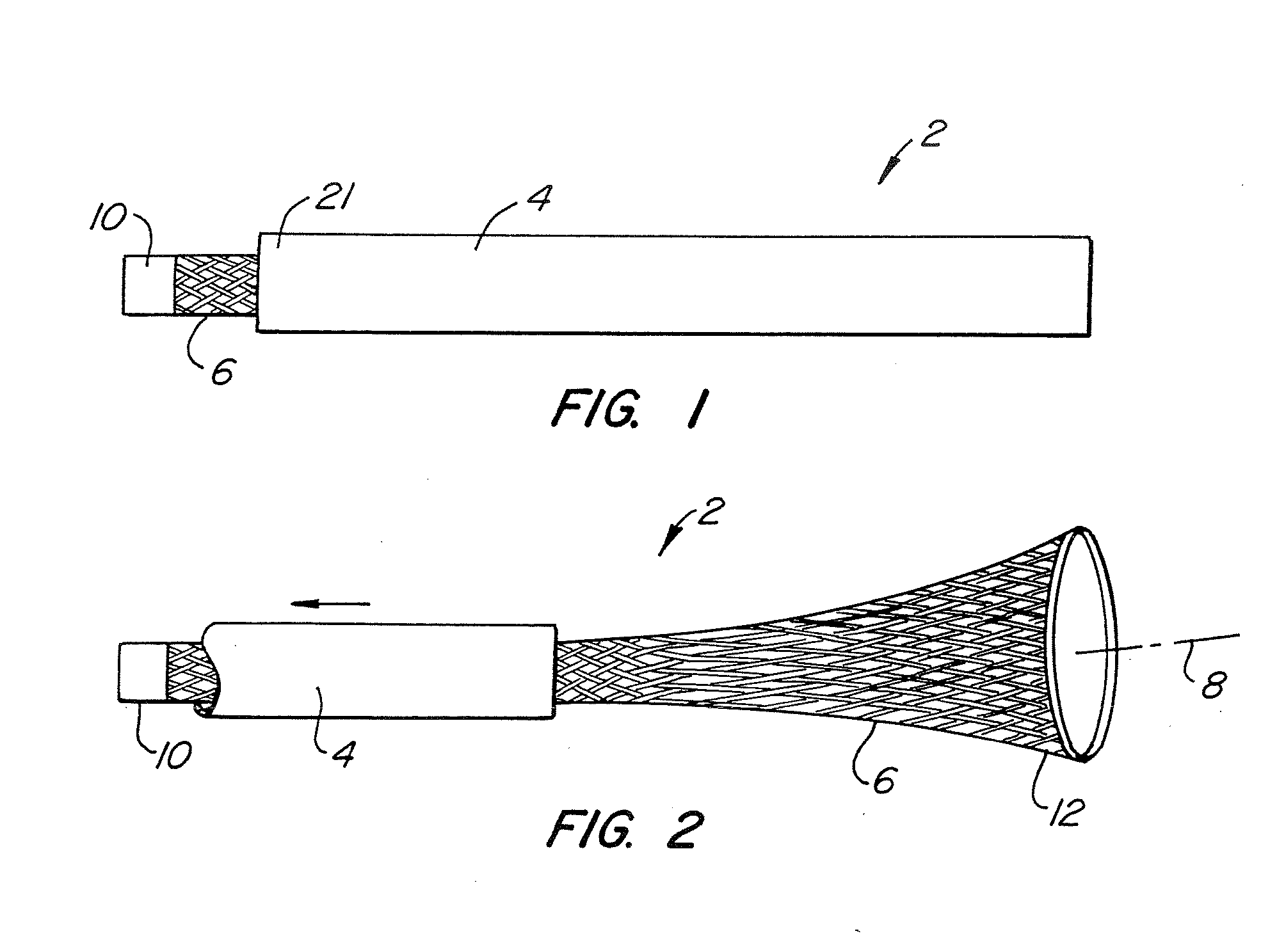Upper Airway Device and Method
a technology of airway and upper airway, which is applied in the field of obstructive sleep apnea, can solve the problems of increased incidence of automobile accidents, decreased job productivity, and arousal of respiratory effort, and achieves the effects of simple use, reasonable cost, and simple construction
- Summary
- Abstract
- Description
- Claims
- Application Information
AI Technical Summary
Benefits of technology
Problems solved by technology
Method used
Image
Examples
fourth embodiment
[0043]FIGS. 10 and 11 illustrate the invention. Device 40 is similar to device 30 of FIG. 8 in that it naturally assumes a relaxed, radially contracted position as shown in FIG. 10. However, instead of being made from a tubular braided element, the tubular element is a Malecott-type tubular element 42. Tubular element 42 includes four arms 44 separated by slits 46. String-like placement elements 34 are used, as in the embodiment of FIGS. 8 and 9, to place tubular element 42 in a radially expanded position. Device 40 also has a porous filter section 48. Section 48 is preferably made of a radially collapsible and expandable material, such as a sponge-like material or a cotton ball-like material, which permits the relatively unhindered flow of air along the air passageway when tubular element 42 is radially expanded state while filtering the air and / or treating tissue along the air passageway with an agent.
[0044] Porous filter sections 28, 48 are shown located at the distal end of the ...
fifth embodiment
[0045]FIGS. 12 and 13 show fifth embodiment of the invention in which the device 52 includes a Malecott-type tubular element 54, similar to tubular element 42 in FIGS. 10 and 11, but which assumes a relaxed, expanded condition. Therefore, for insertion and removal, tubular element 54 is placed in the radially contracted condition of FIG. 12 using elongate placement element 26 similar to that of FIGS. 6 and 7. Insertion of placement element 26 through tubular element 54 causes the distal end of the placement element to engage distal end 12 of tubular element 54 thus causing the tubular element to move to its collapsed, radially contracted condition of FIG. 12.
[0046] The various upper airway devices discussed above are designed to maintain patency (that is, an open airway), filter air, treat air and deliver agents. While the various embodiment discussed above have been described as typically accomplishing one or two of these functions, devices made according to the invention can be co...
PUM
 Login to View More
Login to View More Abstract
Description
Claims
Application Information
 Login to View More
Login to View More - R&D
- Intellectual Property
- Life Sciences
- Materials
- Tech Scout
- Unparalleled Data Quality
- Higher Quality Content
- 60% Fewer Hallucinations
Browse by: Latest US Patents, China's latest patents, Technical Efficacy Thesaurus, Application Domain, Technology Topic, Popular Technical Reports.
© 2025 PatSnap. All rights reserved.Legal|Privacy policy|Modern Slavery Act Transparency Statement|Sitemap|About US| Contact US: help@patsnap.com



